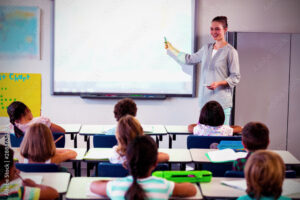
This week we were tasked with finding approachable ways to teach digital literacy to the students of our specific grade range. Given that I teach grades one and two, I took a dive into the curriculum to make connections as well as find ways that I could teach digital literacy appropriately for their ages.
The Saskatchewan Curriculum ELA document indicates that “text is any form of communication, whether visual, oral, written, or multimedia (including digital media)…” I used the term multimedia to help with my search throughout the curriculum in all subjects for grade one and two to make connections. Here is what I found:
Grade 1 Outcomes
CR1.1 Comprehend and respond to a variety of grade-level texts (including contemporary and traditional visual, oral, written, and multimedia) that address identity, community, and social responsibility.
CR1.2 View and comprehend the explicit messages, feelings and features in a variety of visual and multimedia texts (including pictures photographs, simple graphs, diagrams, pictographs, icons, and illustrations).
CC1.1 Compose and create a range of visual, multimedia, oral and written texts that explore ad present thoughts on identity, community, and social responsibility.
- e. Use inquiry to explore a question or topic of interest related to the themes and topics being studied:
– answer questions using visual, multimedia, oral, and print sources
Grade 2 Outcomes
CR2.1 Comprehend and respond to a variety of grade-level texts (including contemporary and traditional visual, oral, written, and multimedia) that address identity, community, and social responsibility.
CR2.2 View and explain (with support from the text) the key literal and inferential ideas (messages), important details, and how elements (such as colour, layout, medium and special fonts) enhance meaning in grade appropriate visual and multimedia texts.
- a. View and demonstrate comprehension of grade-appropriate visual and multimedia texts including multimedia clips, signs, illustrations, diagrams, photographs, graphs, simple charts, and posters.
- d. Obtain information from different media (e.g., multimedia clips, websites, video clips, magazine photographs).
CC2.1 Compose and create a range of visual, multimedia, oral and written texts that explore identity, community, and social responsibility.
- f. Use inquiry to explore a questions or topic that is of individual or group interest including:
– accessing ideas using a variety of sources such as simple chapter books, multimedia and online resources, computers and Elders
In the Saskatchewan Social Studies Curriculum document it addresses multicultural content, perspectives and resources. It says for teachers to promote cultural respect and understanding by demonstrating a variety of aspects in their classroom environment and instruction including to “encourage students to read, view, and listen to a variety of resources and media representative of cultural groups with which students do and do not identify”, “choose resources and media selections that represent a diversity of cultures and cultural perspectives”, and to discuss stereotypical beliefs and cultural biases in resources and media”. Although it was not directly stated in the Social Studies outcomes for grades one or two, this is something that can easily be addressed in understanding where our resources come from and identifying the biases we can find in written work.

For students to have strong digital literacy and be successful in using online resources they need to use a critical eye. Teachers need to help students navigate the online world and develop skills to identify good sources. The goals and questions presented in this article are great to ponder as teachers. Are we being critical of the resources we present to students? Are we showing students how to be critical? How can we ask critical questions about what we are reading in grades one and two?
In terms of teaching these skills to primary students, I think it is important to teach students how to properly and safely use the internet. These kids often have access to devices at home, but we can teach them how to be safe on the internet and how to conduct searches that give them real information and will find answers for whatever it is they are looking for. Using sites such as Sweet Search, or tools such as Google Image search can help students find proper resources for inquiries they have. At this age, we tend to do lots of research together as a class. As the teacher, I can demonstrate ways we can make searches on the internet and how to fact check, as well as how to address any biases that we may find on the pages we find information. In the format of I do, we do, you do, I believe that with lots of practice we can create a generation of kids who have a critical eye at a young age.
Hi Megan,
I appreciate how you have dug through the curriculum to find specifically where digital literacy connects in primary grades. In my job as a grade 1 teacher, teaching my students how to be safe online and how to use the online space properly is a challenge, but absolutely doable.
Thanks for your post!